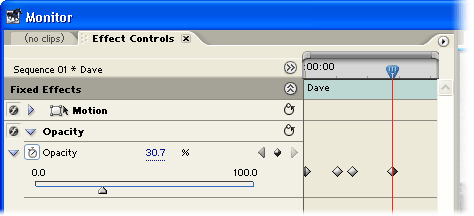

- ADOBE PREMIERE TRANSITION FADE OUT MANUAL
- ADOBE PREMIERE TRANSITION FADE OUT TRIAL
- ADOBE PREMIERE TRANSITION FADE OUT MAC

I often nudge audio clips when making music cuts and trying to line up the cut seamlessly on a beat. Similarly, for audio, nudging clips by a frame can help to find the perfect audio cut point. For video, this is a good way to make tiny adjustments while searching for the perfect cut point. Using this shortcut will move all selected clips by exactly one frame in your chosen direction.

The Nudge Frame Shortcut is CMD+Left/Right. This can be used, for example, to highlight clips from an interviewee who spoke more softly than his counterpart and raise up the volume just by tapping a key on the keyboard. By affecting more than one keyframe at once, it raises or lowers whatever section you choose. Using the brackets while selecting multiple keyframes is especially useful. Audio keyframes are those points in the image above that control the volume. When an audio keyframe is selected, tapping the left bracket lowers that keyframe, while the right bracket increases the level.

The bracket keys are located above the ENTER key on the right side of your keyboard.
ADOBE PREMIERE TRANSITION FADE OUT MANUAL
Using the pen tool for manual adjustments allows for the highest precision audio work, especially useful for smoothing out dialogue levels and ducking music. This is achieved by clicking and dragging on either of the blue dotted handles connected to the keyframe.
ADOBE PREMIERE TRANSITION FADE OUT MAC
After creating a keyframe (the little dots along the volume line that can be created with the pen tool), holding COMMAND on Mac or CONTROL on Windows and then pressing the keyframe again changes it from a linear curve to a bezier curve.īezier curves allow you to manually adjust the rate at which volume is automated. The pen tool seems pretty basic but actually has some hidden features. The pen tool, while slower to use than preset effects like crossfades, offers the most precision when manipulating audio levels. In the audio department, the pen tool is used to draw automation by hand. The pen tool (‘P’ on the keyboard) is a versatile tool within Premiere. Because of its curve, it allows for a smooth transition before, between, and after individual words and syllables.īONUS TIP: Hold SHIFT while adjusting the length of crossfade to only alter one side at a time. This is also useful when trying to fade out quickly after a music hit, lyric, or measure.Įxponential fades are also great at smoothing out cut-up dialogue. I will often use an Exponential Fade at the end of my edits because it allows for a shorter fade out without sounding too abrupt. This fade works by starting the volume adjustment slowly and then increasing it faster and faster (exponentially) until it is finished.īecause of its exponential curve, this transition can be used for specific purposes. The exponential fade is an extremely useful and often overlooked transition. There have been several occasions where a crossfade transition sounded a little off, and changing it to a Constant Gain resolved the issue. I tend to only use the Constant Gain effect when the other fades aren’t working for some reason. This is a subtle difference from Constant Power, which smooths the rate at which the volume is automated. This fade works by decreasing (or increasing) audio at a constant rate. This effect is the most similar to a cross dissolve in the video.Ĭonstant Gain is more seldom used because it can sometimes sound abrupt. The Constant Power transition applies a smooth, gradual fade between clips. This means that when you press the keyboard shortcut for an audio crossfade (CMD+SHIFT+D), a Constant Power fade is applied to your selected cut point. The Constant Power is the default crossfade in Premiere. In Premiere, there are three types of fades to choose from. While this concept is simple, knowing the different types of crossfades can add a level of polish to your edits. A crossfade works by smoothly raising or lowering the volume of audio clips to which it is applied. The crossfade is the most widely used audio transition of all time-not only for filmmakers, but for music producers, DJ’s, and more.
ADOBE PREMIERE TRANSITION FADE OUT TRIAL
Learning the nuances of these tools helps avoid a lot of guesswork and trial and error. Luckily for us, Premiere (and other popular programs) comes with many basic audio tools and effects. Want to add an extra level of polish and professionalism to your edits? How about increasing your efficiency, leaving you more time to craft the story rather than smoothing out audio?


 0 kommentar(er)
0 kommentar(er)
